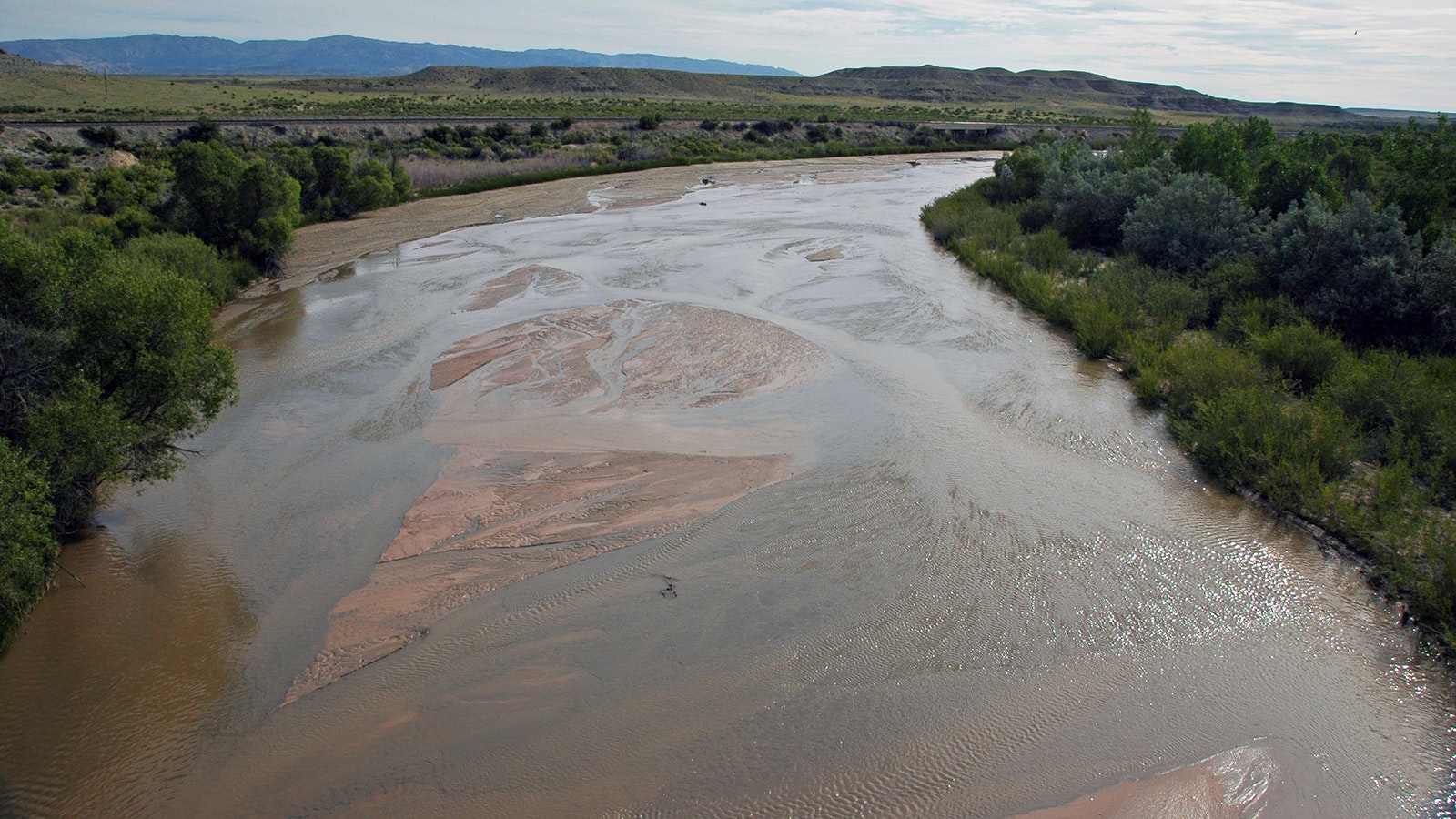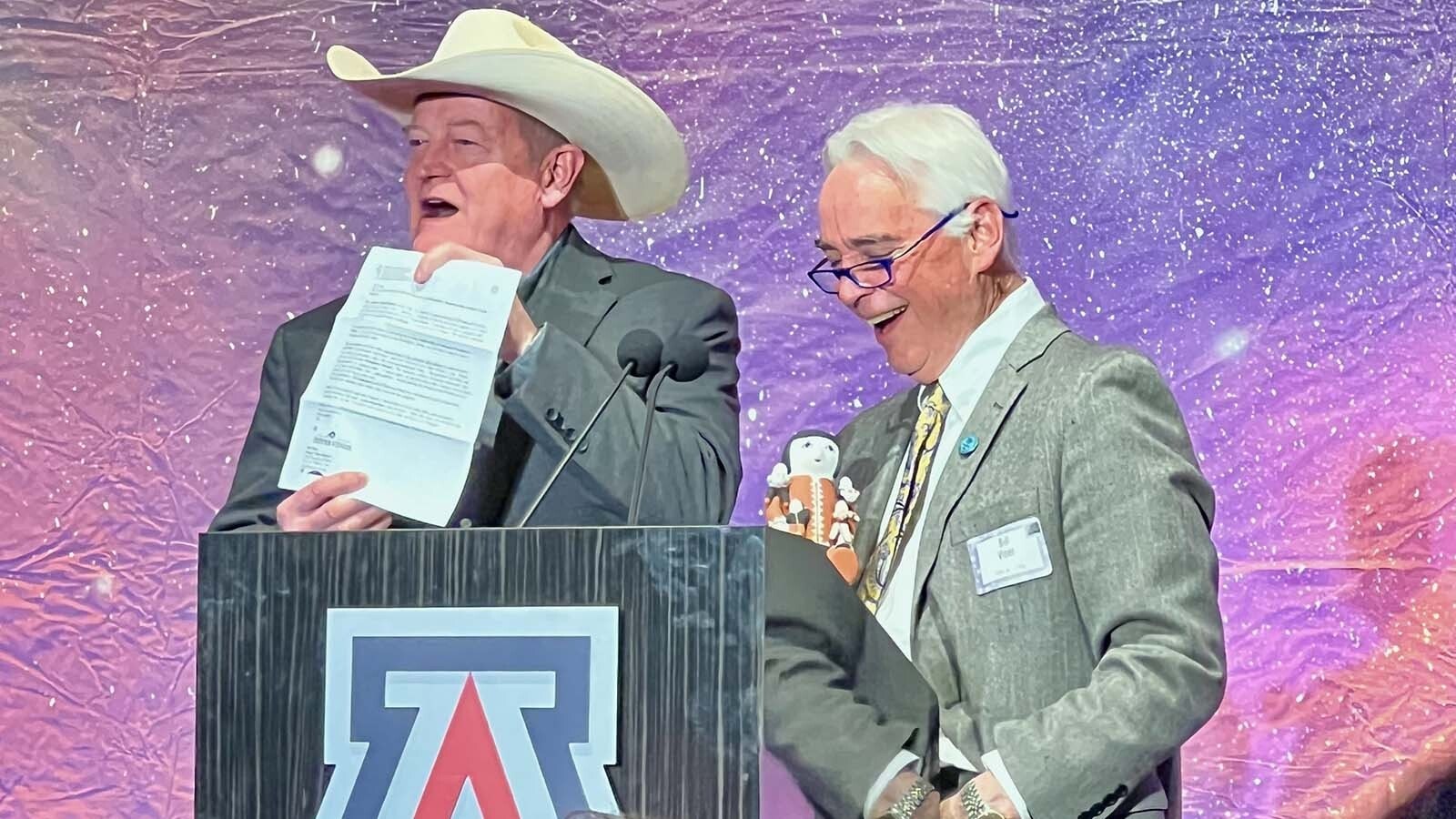Hidden away in the Bighorn Mountains is a mysterious drawing carved on the surface of a massive granite boulder.
Dubbed the “Boot Map,” old-timers have theorized for decades that the drawing, which resembles a Spanish boot, could actually be a map leading to the Lost Cabin Gold Mine.
For more than 160 years, prospectors and treasure hunters have searched for this fabled gold mine.
The burned remains of a cabin and a fortune in gold are believed to be hidden either along the banks of Badwater Creek in central Wyoming or somewhere in the Bighorn Mountains.
Historian Mary H. Hendry wrote about seeing the Boot Map carving for herself in “Tales of Old Lost Cabin and Parts Thereabout."
“One notices that across the surface of the ‘Boot Map’ arrows lead into and out of the carving,” Hendry wrote. “The story of the Lost Cabin Gold Mine seems to fire the imagination of most prospectors when they see the ‘Boot Map’ for the first time.”
She then recounts the story of Albert Hulburt, the man who discovered, built and lost the Lost Cabin Gold Mine in 1863.
Her version of the lost mine was first written by E. Richard Shipp in an article for the Casper, Wyoming, newspaper Inland Oil Index, although the first name he recounts is different from Hendry’s version.
Shipp wrote that Allan Hulburt, a Californian ’49er, found a rich gold mine in the vicinity of the Bighorn River in 1863 with fellow miners named Cox and Jones.
They were attacked by Indians and only Hulburt survived. He managed to find his way to the area of Fort Casper, where he told his story. Hulburt gathered a huge party, but they never found the mine.

Searching For The True Story Of A Lost Gold Mine
Hans Lonegren, a professor of human geography at the University of Unkopin in Sweden, first became interested in the Lost Cabin Mine when he read a note on an official road and tourist map of the Wyoming State Highway.
On a spot between Casper and Buffalo close to Kaycee, the note said, "Territory of the mysterious 'Lost Cabin Mine' where in the fall of 1865 seven Swedish Miners from the Black Hills, five of whom were killed by Indians, mined seven thousand dollars worth of Placer Gold in three days."
Intrigued, he started investigating this Lost Cabin Mine and searched through military records, newspaper accounts and early history books. He was unable to find any proof the mine existed but does not completely discount the story.
Lonegren theorizes that it may be a piece of history that could still be proven.
While there are several versions of the Lost Cabin Gold Mine, Lonegren was most drawn to the story of the seven Swedes, his own countrymen.
In the 1919 Wyoming Historical Society's Miscellanies publication, the story was written as told to I.S. Bartlett by Charles Clay in March 1894. Clay was a former resident of Douglas, Wyoming, and declared that he had gotten the story directly from the two men who survived the expedition.
“Sometime in the late fall of 1865, a party of seven Swedes left the Black Hills of Dakota Territory,” Lendry wrote, based on this story recounted nearly 30 years after the mine was lost. “They pushed west for some weeks and arrived at the foothills of the Big Horn Mountains. They crossed the mountains and came to a stream, today known as Badwater Creek.”
These men discovered gold nuggets in the creek and the next day, found a gold vein.
“A part of the riverside had collapsed, and the sand was easy to pan and find the nuggets,” Lonegren wrote.
It was late fall and winter was approaching, so the men built a cabin while they planned a rich future for themselves. However, fate would soon intervene.
“The presence of the small group of miners had been observed by some Indians moving around the area,” Lonegren wrote. “They were too few to attack the miners, but they went for reinforcements.”
Four of the miners were killed in the ambush and three escaped. However, the next morning, the Indians attacked again and one of the remaining Swedes was badly wounded and the men took refuge in a cave.
“The wounded man died, and the two-remaining found themselves in a dry, unfriendly country, without food or equipment and surrounded by enemies,” Lonegren wrote. “The weather worsened, and their lives hung in the balance.”
The Indians took their horses and left them to die.
Miles from a settlement, the two men managed to survive the trek to Ft. Reno on the banks of the Powder River. Their misadventure did not end there when they were mistaken for army deserters and arrested.
When their true identities were finally believed, they were permitted to place their $7,000 worth of gold in the bank office of Laramie.
This gold proved their tale and the search for the Lost Cabin Gold Mine continues to this day.
Searching For The Lost Mine
By this time, one of the miners had gone insane and the other was determined to return to their gold mine.
In May 1866, the sane miner, Lonegren wrote, organized a new party of twelve men and headed for the Bighom area by the same route as the original party had taken.
This group disappeared without a trace. Legend has it that the Indians of the area used to talk of a battle in which all the whites were killed.
In 1895, perhaps only coincidentally, Bill Barlow’s Budget of Riverton, Wyoming, reported that cowboys found the skeletons of twelve men in a quake asp grove on Badwater Creek.
It was the belief at the time that they were white soldiers since buttons from soldier’s uniforms were found scattered among the skeletons.
There is also the chance they could be the missing 12 miners who were said to have gone to Badwater Creek in search of gold when they disappeared in 1866.
So Many Versions
Several versions of the Lost Cabin Gold Mine have been told over the past 160 years. While some stories, such as the one cited by Lonegren, claim the lost mine is along the Badwater Creek there are other versions that are more vague and say that the mine was somewhere in the vast wilderness of the Bighorn Mountains.
In 1933, A. J. Mockler included three versions of the “History of Natrona Country.” In one story Mockler states that C. T. Jones, known as "Rattlesnake Jones," is said to have discovered the Lost Cabin Mine.
Jones was, according to his own words, directed to the spot by spirits.
Whether it was seven or three miners, all the stories agree that the gold mine was rich, a cabin was built against the weather and the majority of the miners were killed by hostile Indians during the Indian Wars being waged between the 1860s and 1870s.
The legend of the Lost Cabin Gold Mine lives on in the imaginations of historians and adventurers. According to Lonegren, the dates and places align with actual historical events such as the existence of Ft. Reno in 1865.
Thus, he contends the mine could yet be proved to be real.
Time will only tell.
Jackie Dorothy can be reached at jackie@cowboystatedaily.com.









